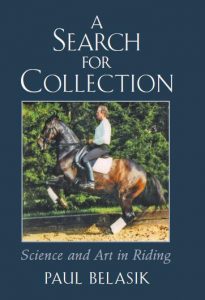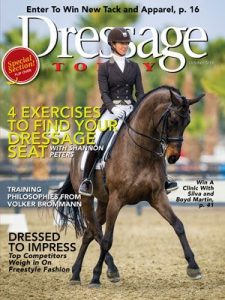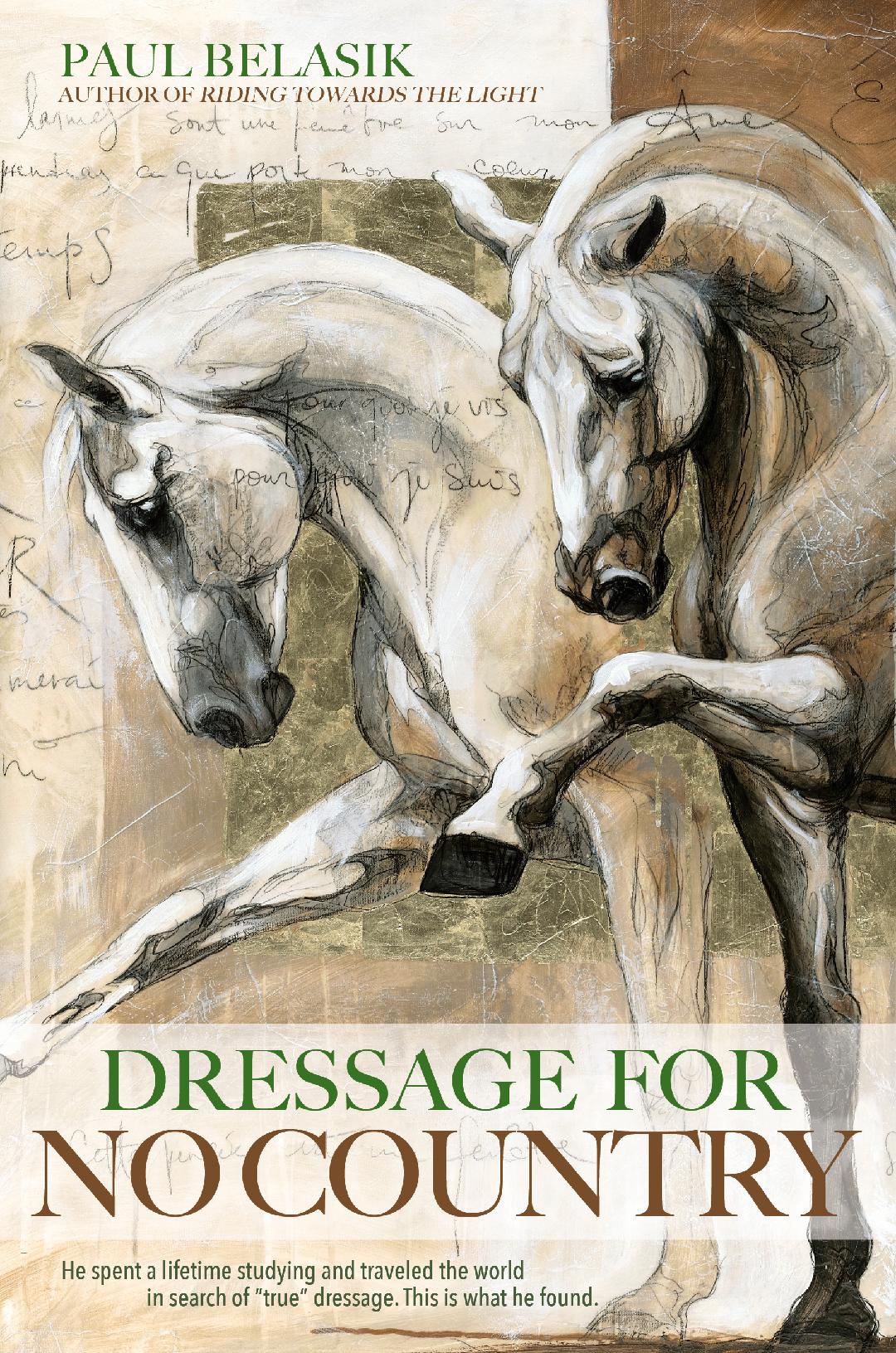09 Sep Search for Collection in paperback from Crowood Press

Just released in 2018! At the core of this book is a series of ‘state of the art’ experiments in which the author participated, designed to establish whether certain classical ideas about true collection could be scientifically proved.
Discussion of the results leads into an exploration of how working towards collection informs the progression of training and the way in which the exercises are implemented. Furthermore, Belasik points out, this pursuit of collection is likely to take a purer form if it is motivated by artistic values rather than by the rider’s ego. In this regard, the author urges readers to focus on their own individuality, rather than being motivated or misled by external pressures; to ‘collect’ or ‘centre’ themselves, as they work towards a similar state with their horses. It is a fascinating and thoughtful read.
Purchase the paperback edition here
Mary Daniels reviewed the book for Dressage Today
“This is an extraordinary and unique book, as intensely scholarly as it is deeply concerned with aesthetics by an author whose previous work is well-known and appreciated. This book however is a tour de force topping what else he has done, as it is so deep and encompassing, as much about a philosophy of living one’s life authentically as it is about training horses to the ultimate level of collection–piaffe/levade.
It begins with the most remarkable introduction to a dressage book I have ever encountered: “Learning to Choose Beautifully.” In poetic language the author relates how he was jogging in Hawaii while on a clinic/vacation trip, ruminating on how it is one gets to learn who one really is, as you are born with a kind of “amnesia” about it, which the whole world conspires to dictate.
“To start to find out what to do with your life, you cannot go to a society whose primary goal is to homogenize minds…” he writes. “One has to go to Nature, which has no stake in the outcome.” Through actual practice and experience one learns to choose beautifully, he says.
As time goes on, he says, he finds two groups have developed, one is people who need external evaluation and validation. “For them to do a thing undocumented and unnoticed is not to do a thing at all. Who they are is always answered by other people.”
The other group “seems to fall in love with motion itself, resists interpretations and explanation of what they do by other people.” They need direct experience and are suspicious when it is evaluated, translated, analyzed, rewarded or punished, he says. Belasik clearly falls into this category himself, which is at the very core of this book.
And what does this have to do with collection? Everything, as it turns out.
He is clearly and vehemently against the training trend du jour. “Some competition dressage riders promote systems and theories of training that are in complete contradiction to the classic theory of collection, forcibly pulling and holding their horses’ heads to their chests in complete subjugation, justifying it with the explanation this ‘stretching’ is good for the horses,” he writes. It does not seem to matter, he adds, that this new system contradicts some of the oldest dressage theory that the whole object of the dressage horse is to rebalance it upon the haunches. He finds this approach one of unrelenting aggression against the horse, as demeaning as it would be to do the same to a human. “There have always been extremes in riding but rarely have they attained such a strong hold of center stage,” he adds.
And so in courageous and open-minded pursuit of what can be scientifically proven or disproven, Belasik and his horse St. Graal take part in a series of scientific experiments at the McPhail Center at Michigan State University officiated by Dr. Hilary Clayton, the equine biomechanics expert who has been working for years to establish a baseline understanding of how horses move.
One experiment done on force plates with computers registering reactions, was to measure the forces and describe the biomechanics of the transition from piaffe to levade. If the forelegs pushed the forehand up, it would question the great preponderance of classical literature. If the forehand was pulled up by the muscles of the back, abdomen and hindquarters, however, it could validate 300-year old as yet unproven theories.
Belasik felt a sense of relief that after Dr. Clayton’s analysis, there was a definite proof and description of the classicists’ idea of collection.
As a result, Belasik had even more reverence for his predecessors who invented these movements and believed in them without definitive proofs. He felt very lucky to have his question answered this time.
But another question remains, was there something in competitive dressage that was contributing to the loss of collection, and even to a loss of understanding of the ideas of collection. If collection was always the heart and soul of dressage, logically a loss of understanding of collection would mean a loss of the idea of what dressage really was. But he knew, whatever you want to do, “there may not be enough science to answer your questions.” There will, however, “always be enough art to propose them. It will be the artists who propose them.” (At the risk of sounding extravagant I have always thought of Belasik as a sculptor of living horses.)
And so back to his first chapter and the idea of individuality, ignoring external pressures to pursue what is real for you.
“Classical riding is all about the process, not goals. Along the way you are learning emotional control, patience with insight and physical fitness,” he says, which is how he defines “collection or centering” for the rider, a necessary parallel education to that of the horse.
There is a great deal more in this book, philosophical, practical, biomechanical, artistic, scientific, that the limitation of space does not permit mentioning. Suffice to say that nowhere else except perhaps in the books of Portuguese maestro Nuno Oliveira, have I read analyses of the movements, starting with shoulder-in, that clearly define the objectives of each exercise.
This book, for me, is like a guiding light home in the encroaching dusk. I am glad it was written. It has been my humble privilege to review it.”





